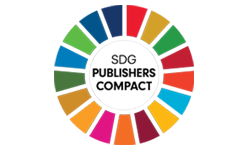While Myanmar shared one of the richest lands in South Asia with affluent natural resources and qualified human resources, it has suffered long-lasting economic stagnation since 1962. However, conspicuous economic growth, after the take off-strategy 1997 (1999-2007), was highest among 10 member countries of ASEAN, China and India, and has demonstrated their potential ability to transform their constraints into a springboard for innovation. This reminds us of Information CommunicationTechnology (ICT) driven development trajectory demonstrated by the world ICT top leaders, Finland and Singapore. Both transformed their indigenous constraints into India, and has springboard for ICT advancement and prompts us a hypothetical view that such a trajectory could be a promising strategic option for Myanmar in awaking its latent competitive power. This paper presents an empirical analysis consideringICT driven developing trajectory in 146 countries. The analysis involved four major steps. Firstly, Myanmar’s possible development trajectory was estimated, based on innovation diffusion theory, by identifying its current position in the global ICT versus per capita income development trajectory. Secondly, Myanmar’s current position in the global ICT driven economic development trajectory was identified based on the theories of timing of emergence of functionality development and CHASM (deep trench compelling new ventures start-up). Thirdly, given Myanmar’s position in anticipating support from ICT advanced countries for its ICT advancement, effects of support were analyzed by decomposing the governing factors to ICT advancement. In addition, Myanmar’s institutional identity supportive to effective utilization of ICTsupport was analyzed. Fourthly, based on the foregoing analyses together with the analysis of the similarity and disparity between world ICT top leaders, Finland and Singapore, possible scenarios for Myanmar’s ICT driven development trajectories, growth-oriented or welfare and happiness seeking were compared.
Burke, A. (2013) ‘Myanmar and Foreign Aid – Recent Changes, Risk and Opportunity.’, The Policy Practice, September 2013, (online) (cited 6 July 2014) Available from <URL:www.thepolicypractice.com.
Chew, M., Watanabe, C. and Toy, Y. (2010) ‘Technology Leapfrogging: Findings from Singapore’s Water Industry‘, Journal of Technology Management for Growing Economies, 1:2pp. 29-47.
Cowen, T.(2011) ‘The Great Stagnation‘, New York. Dutton.
EU (2010) ‘Europe 2020: A Strategy for Smart, Sustainable and Inclusive Growth.’ Brussels. EU.
Evans, P. (2013) ‘Competition Arrives in Myanmar’s Restructured Telecom Sector: What Next? Myanmar (Burma) Telecoms, Mobile and Internet’ 19th Edition. (online) (cited 6 July 2014) Available from <URL: www.budde.com.au/Research/Myanmar-BurmaTelecom-Mobile-and-Internet.html>
Han, S.W.(2010) ICT Development in Myanmar by Department of Communication and Integrated Systems, Tokyo Institute of Technology, Cooperation Opportunities in ICT between Japan and Myanmar, Tokyo.
Hofstede, G. (1991) ‘Cultures and Organizations’, London. McGraw-Hill International.
ILO (2012) Distribution of Household Income by Source, ILO, Geneva.
International Monetary Fund (IMF), annual issues. World Economic Outlook Database. IMF, Washington.
International Telecommunication Union (ITU) (2013) Measuring the Information Society 2013, ITU, Geneva.
Kyaw, T. H. ‘Primary Education in Myanmar,’ (online) (cited 6 July 2014) Available from <URL: http://www.accent.ac.nz/elto/articles/primary-education-myanmar>.
Kyi, K. M., Findlay, R. Sundrum, R.M., Maung, M., Nyunt, M. and Oo, Z. (2000) A Vision and a Strategy: Economic Development of Burma, Stockholm, The Olof International Center.
Mahajan, V., Muller, E. and Srivastava, R. K. (1990) ‘Determination of Adopter Categories by Using Innovation Diffusion Models‘, Journal of Marketing Research, 27:1, pp. 37-50.
Ministry of Communication Posts and Telegraphs (MCPT) (2011) Myanmar ICT Master Plan, MCPT, Yangon.
Moore, G.A. (1991) ‘Crossing the Chasm, Marketing and Selling Technology Products to Mainstream Customers.’, New York. Harper Business Essentials, Harper Collins.
Moore, G.A. (1999) ‘Crossing the Chasm, Marketing and Selling Technology Products to Mainstream Customers.’, New York. Harper Business Essentials, Harper Collins.
Rogers, E.M. (1962) ’The Diffusion of Innovations’, (3rd Ed.) New York. The Free Press of Glencoe.
Oo, T. (2012) Cooperation Opportunities in ICT between Japan and Myanmar. Myanmar Computer Federation, Myanmar Info-Tech, Yangon.
Tokumasu, S. and Watanabe, C. (2008) ‘Institutional Structure Leading to the Similarity and Disparity in Innovation Inducement in EU 15 Countries.’, Journal of Services Research, 8:1, pp. 5-42.
UN (2012) World Happiness Report, UN, New York.
UNDP (2013) Impact Assessment of the UNDP Human Development Initiative in Myanmar, UNDP, New York.
Watanabe, C. (2009) ‘Co-evolutionary Dynamism between Innovation and Institutional Systems: The Rise and Fall of the Japanese System of Management of Technology’, in The Science of Institutional Management of Technology: Elucidation of Japan’s Indigenous Co-evolutionary Dynamism and Its Accrual to Global Assets. Tokyo. Tokyo Institute of Technology, pp. 21-34.
Watanabe, C. (2013) ‘Innovation –consumption Co-emergence Leads a Resilience Business.’, Innovation and Supply Chain Management, 7:3, pp. 92-104.
Watanabe, C., Kondo, R., Ouchi, N., Wei, H., and Griffy-Brown, C. (2004) ‘Institutional Elasticity as a Significant Driver of IT Functionality Development‘, Technological Forecasting and Social Change, 71:7, pp. 723-750.
Watanabe, C., Naveed, K. and Zhao, W. (2014). ‘Institutional Sources of Resilience in Global ICT Leaders – Harness the Vigor of Emerging Power‘, Journal of Technology Management in Growing Economies, 5:1, pp.7-34.
Watanabe, C., and Zhao, W.(2006) ‘Co-evolutionary Dynamism of Innovation and Institution’ in Yoda, N., Pariser, R., and Chon, M.C. (Eds.) Chemical Business and Economics. Tokyo. The Chemical Society of Japan, pp. 106-121.
World Bank(2000) A Vision and Strategy of Economic Development of Burma. Washington.World Bank.
World Economic Forum (WEF) (2012) The Global Information Technology Report 2012, WEF, Geneva.
World Economic Forum (WEF) (2013a) The Global Competitiveness Report 2013-2014, WEF, Geneva.
World Economic Forum (WEF) (2013b) The Global Information Technology Report 2013, WEF, Geneva.
Zhao, W., Watanabe, C. and Tou, Y. (2013) ‘Co-emergence of Institutional Innovation
Navigates the New Normal in Growing Economies‘, Journal of Technology
Management in Growing Economies, 4: 1, pp. 69-81.


